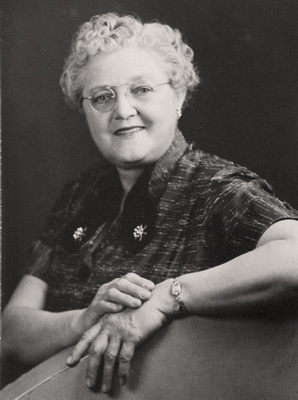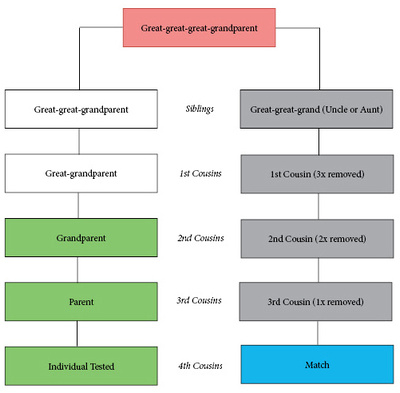This spring my paternal grandfather had a milestone birthday – 95 years old.
All four of his grandparents were immigrants who arrived in the United States
in the 1890s. His paternal grandparents,
Anthony Murosky, Sr. and Eva Zielinski, arrived separately from Lithuania.
The couple met in Forest City, Pennsylvania and were married.
His maternal grandparents, Vincent Bukowski and Franciska Kwiatkowski, came
from Poland with three young children. These four individuals are currently the
oldest known ancestors on his side of the family. These families unfortunately
did not leave many clues behind. At this time there are no definitive information on
what cities they were living in before departing for the United States.
The Test
In attempt to learn more about these families I tested my grandfather with
the
AncestryDNA kit. This DNA test looks at an individuals’ autosomal DNA. The autosomal
DNA provides an understanding of the individual’s inheritance as it will show
DNA inherited from their mother and father.
My grandfather is the oldest living person in the family on his paternal and
maternal sides. He is the closest link to the oldest known ancestors. When
evaluating his results there are only four starting variables - making it
plausible to learn more about each of the four lines he descends from.
The AncestryDNA test kit arrived shortly after ordering by mail.
The instructions are easy to follow. The kit arrives with a bar code, which
needs to be activated online. A saliva sample is collected from the test
individual. The sample is then placed in the pre-paid mailer provided in the
kit. Simply place the sample in the mailer and take it to the post office to
send it in. The test lab uses the activated bar code and never knows the name
of the individual
tested. The
bar code system is one of the methods AncestryDNA uses to protect the identity of
individuals tested. To learn more about
the AncestryDNA privacy policies please visit this
link.
Once the sample is received
at the laboratory for processing Ancestry.com (Ancestry) will send you a
notification.
The Process
Ancestry has developed 26 ethnicity regions.
Each of these regions has a DNA reference panel. Ancestry sequences the
DNA sample and runs numerous separate analyses to compare the sample to
reference panels for each of the 26 regions. The goal of the analysis is to
identify how the sample compares to the typical person living in the regions.
The results determine which combination of the ethnicity regions makes up the
DNA of the test individual.
The Results
The results indicate that my grandfather is 100% Eastern European. A 100%
match to one region is rare but occasionally occurs. The results suggest that
his ancestors lived in the same location for several generations.
The countries
in the Ancestry Eastern European Group include: Poland, Slovakia, Czech
Republic, Austria, Russia, Hungary, Slovenia, Romania, Serbia, Ukraine,
Belarus, Moldova, Lithuania, Latvia, Bosnia and Herzegovina, Croatia.
Linking Family
After DNA for an individual is tested, AncestryDNA begins to search the DNA database (which grows each day) to identify other individuals with similar genetic markers. These
individuals may be parents, grandparents or cousins. The process used will
attempt to predict the relationship between the individual tested and the DNA
match.
It is highly recommended that the DNA sample be linked to an individual in a
family tree. Using data from the family trees it is possible to identify
the common ancestor between the individual tested and the match. In some cases
the common ancestor may be unknown. Working together the researcher and match
may be able to identify the ancestral line and/or the common ancestor that
links the two individuals together.
Making Connections
After reviewing the results the next step is to begin to review the
AncestryDNA matches to determine if it is possible to identify the ancestral
line and/or the common ancestor between the tested individual and the match.
What is very exciting is my grandfather has several matches – meaning he shares
a common ancestor with other individuals that have been tested.
2nd cousins
In my grandfather's results the first grouping of matches identifies 2nd cousins. The current
results have identified two second cousin's with my grandfather. In
this example Vincent Bukowski and Franciska Kwiatkowski are the common
ancestors. The two cousins are descendants of Catherine Bukowski - my
grandfather's aunt.
4th cousins
The next grouping of matches in my grandfather's results identifies potential 4th cousins. This grouping is very
interesting as it identifies a relationship between one of my grandfather's
unknown ancestors and the individual with the match. The common ancestor
could be my grandfather's 3rd great grandparent or 4th great grandparents who was most likely in Lithuania or Poland (but could also have been living in one of the other countries in the Eastern European group).
This example of a 4th cousin match is best illustrated by the graphic below. The green boxes
represent known information: my
grandfather, his parents and his grandparents. The white boxes represent my
grandfather’s unknown ancestor’s line. The red box represents the ancestor that
is the link between the test individual and the match. The grey boxes represent the connections
between the common ancestor and the match. The blue box represents the match.
In some cases the match may know the names of the individual who populate the
grey boxes and possibly the red box. In other cases they may not.
I am currently working with some of these 4th cousin matches in attempt
determine which of the four lines the match occurs on. These matches may
provide some insight into what regions the families may be from. In time these matches could also uncover additional ancestors.
It should also be noted that the match could be another variation which places the test individual and the match the same number of degrees away from each other. Fourth cousins are 10 degrees apart. What do the degrees mean? The degrees compared to the graphic above are listed below.
- Individual Tested - 0 degrees
- Parent - 1 degree
- Grandparent - 2 degrees
- Great-grandparent - 3 degrees
- Great-great grandparent - 4 degrees
- Great-great-great-grandparent - 5 degrees [The common ancestor]
- Great-great grand (Aunt or Uncle) - 6 degrees
- 1st cousin (3x removed) - 7 degrees
- 2nd cousin (2x removed) - 8 degrees
- 3rd cousin (1x removed) - 9 degrees
- The Match - 10 degrees.
Other relationship types that are 10 degrees apart include: 3rd cousin (2x removed) and 2nd cousin (4x removed). The match could also be to a 5th cousin. To lean more about cousin relationships view the blog post
First Cousin 2x Removed, Second Cousin - What does it mean?
Distant cousins
The third grouping is for matches that may be 5th cousins or greater. For
individuals with tree details for several generations it might be possible to
identify the common ancestor. In my grandfather's case, with limited knowledge,
it may be difficult to understand the common ancestor or line.
To learn more about the Ancestry.com DNA test works please visit this link.






